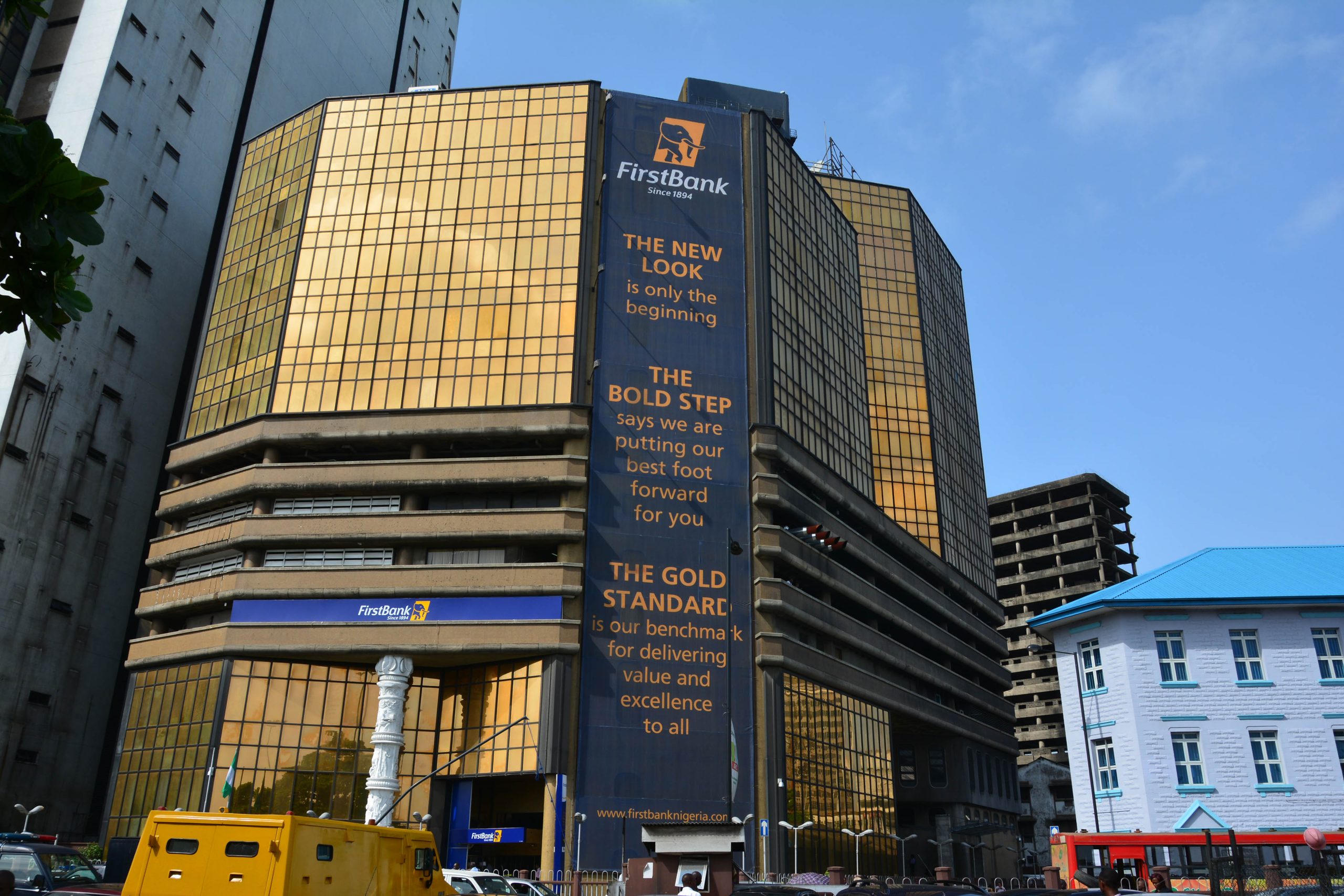ACCESS BANK Q3,2020 :THE FEAR OF INDUSTRY CHALLENGER

The battle for leadership between the orthodox and unconventional players in the Nigerian baking industry is as interesting ,dynamic as fierce .In the last five years, the Nigerian Bankosphere has been on a roller coaster ride The game plan between the two are clear .For the orthodox players their interests are in protecting the past than creating the future ,taken industry structure as a given, and seldom challenging the prevailing conventions.But the unconventional players ,are fundamentally creating new competitive space .
The signals from the latter are clear and forceful: competing for the future is not for dilettantes ; it is for those not content to follow ,they are willing to rewrite the rules ,unafraid to challenge orthodoxy and committed to staking out the future first .
Access Bank , the new sheriff in town and an industry challenger, belongs to the latter model and the above initiatives are already paying off heavily for it , sending fear down the spines of those ahead of it The bank’s strategic capability and vision that delivered the acquisition of the rested Diamond Bank provided synergy and the mother lode that lifted the it to the front seat among the tier 1 banks . It has overtaken two behemoths and close tracking another two grenades with heavy potentials.
Access Bank’s whopping balance sheet size enhanced by the acquisition has bestowed on it , the much coveted laurel of the biggest bank in Nigeria keenly followed by Zenith Bank Plc .Its assets base remained strong and resilient with Total Assets of N7.93trn in September 2020, a growth of 11% YTD from N7.14trn in December 2019
A puffy assets level could indicate improved strengths in mopping up transactions, including a better position in maturity transformation- the stuff banks are best suited for. It can also mean that the bank has applied some elastic to its wings in the form of more customer touch points, branches and Point of Sale devices. For Access , it was all of these and more.
On the back of a hefty assets base Access Bank money making machine appears to have outperformed its major competitions among tier 1 banks in gross earnings. . Its gross earnings rose 15% y/y to N592.8bn in 9M 2020, (9M 2019: N513.7bn), with interest and noninterest income contributing 63% and 37% respectively. Access Bank delivered the above strong top-linefigures despite a challenging and fast-changing macro and banking landscape, occasioned by the COVID-19 Pandemic and the consequent decline in oil price.
What else are driving this bank’s impressive runs ? First a fact must be acknowledged The above achievements did not come under the knuckles of luck but competence and visions .This view cannot be disputed. In this ongoing financial year, the COVID-19 pandemic put a lot of pressure on Nigeria’s banking sector in both Q2 and Q3 2020, with the sector shrugging off its lethargy in Q3 as the economy restarted after three months of partial lockdown imposedwhich lead to restrictions in business activities and movement. The impacts of the above circumstances were highly deleterious. The above circumstances are making the terrain riskier . But the tough still get going. Banking is coterminous with risks and banks must take risks .
The bank deployed a total net Loans and Advances of N3.53trn as at September 2020 compared to its December 2019: N3.06trn . But the terrain was not too friendly. Non-Performing loans (NPL) ratio stood at 4.2% as at September 2020 (December 2019: 5.8%), on the back of a N70.1bn write-off and cautious restructuring in the period.
Also while the cost of funds came down , yield on assets declined too at greater pace . .Average Cost of Funds (CoF) decreased 160bps y/y to 3.6% from 5.2% in 9M 2019 (Actual CoF in the period was 3.5%). Yield on Assets of 9.7%, down by 336bps y/y from 13.0% in 9M 2019.
The above circumstances impacted negatively on interest income . ‘The bank’s Interest Income declined by 7% y/y to N375.3bn in 9M 2020 (9M 2019; N405.0bn), largely driven by the falling yield environment which saw income on investment securities drop by 15% y/y to N118.8bn The above downturns may not be farfetched. Bank management is no more than managing risks, the risks of mismatches between assets and liabilities and between borrowing and lending rates These are on the back of the declining yield environment .This ultimately affected the bank’s ability to turn interest income to profit as Net Interest Margin (NIM) declined to 5.1% in 9M 2020 from 6.8% in 9M 2019,
However, Access Bank, Nigeria’s biggest bank by assets wrenched up bottom line with a deft application of management’s experience beginning from leveraging non interest incomestream to serve as its stabilizing agent Despite the high cost of operating the enlarged franchise and increase in net impairment charge, non -Interest Income increased by 100% y/y to N217.5bn (9M’19: N108.6bn), largely led by the year-on-year growth in trading income. Transaction fees, Commissions and Other operating income accounted for 55% and Net trading income the balance of 45%. Included in Other operating income are recoveries of N24.8bn. The bank also had strong showing in its Channels and other E-business of N38.8bn(+105% y/y).‘‘This buttressed the effectiveness of our strategy and capacity to generate sustainable revenue. We continued to grow our transaction banking income through the optimization of our channels and electronic banking platforms (+105% y/y), notwithstanding the reduction in transaction charges following the revised guide to bank charges in December 2019” , the bank noted .
The above gains buttress the resilience of the Bank even in these uncertain periodDespite the rise in Impairment Charges and Operating Expenses, profit before Tax (PBT) for the period rose by 16% y/y to N116.6bn (9M 2019: N100.8bn) . Those impressive runs gave its Profit After Tax (PAT) a sinecure to grow by 16% y/y to N102.3bn from N88.4bn in 9M 2019, on the back of a 29% y/y growth in Operating income .Cost-to-Income Ratio (CIR) declined by 176bps y/y to 62.1% in 9M 2020 (9M 2019: 63.8%), despite the high cost of operation of the enlarged business scale. We continue to drive our cost transformation initiatives to minimize cost, which will result in improved efficiency ratios.
There was significant improvement in Return on Assets and the leap in return on Equity . Return on Average Equity (ROAE) stood at 21.2% with a Return on Asset (ROAA) of 1.8% in the period.
Customer Deposits increased by 24% YTD to N5.26trn in September 2020 from N4.26trn in December 2019. Low cost deposits (Current Accounts and Savings Accounts) accounted for 62.4% of the deposit base. Savings accounts deposits closed at N1.23trn as at September 2020.
The bank maintained a robust capital and liquidity positions of 21.1% and 48.0% respectively, well above regulatory levels. Capital Adequacy Ratio (CAR) remained well above regulatory minimum at 20.3%, reflecting the adjusted impact of the IFRS 9 implementation. Similarly, Liquidity ratio of 48.0% (December 2019: 47.0%) remained well above regulatory requirements. The bank recorded consistent growth in our retail banking business, as evidenced by the growth in customer sign-on by 3.2mn customers YTD via its financial inclusion strides. Transaction volume and value also grew based on its deliberate investments in digital banking.




